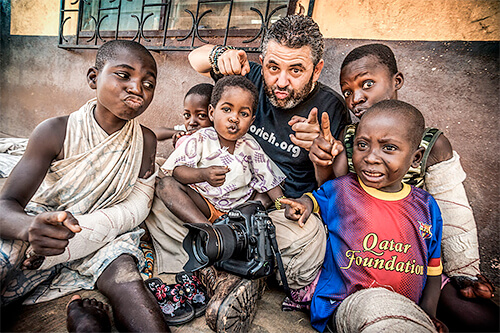I have always loved photography... and tell stories. Browse faces, roads, lights... and shadows. I have no idea what that can last a lifetime -boredom prevails in too many hearts- that can happen within it. But what I know for sure, is the wonderful and perfect division of a second in magical fractions of light and color. And that in my world, in my mind it would be more accurate, it´s an argument more than enough to even let life steal. One "one hundred twenty-fifth of a second" may be the closest thing to eternity...
And there was light...
And that happened in some distant land across the vast ocean...
Antonio Aragón Renuncio
Since the mid-90s always involved with photography: Founds and chairs "Nostromo" Photographers Association (Spain). Photography professor (+15 years) in several universities: UC (Spain), UAM, UCA and URACCAN (Nicaragua)... He organizes and directs the I Photography Festival of Santander. He writes about photography in different publications and publishes reportages in international media. He was Publisher in "Xplorer" Magazine (Nicaragua). He has been free-lance photographer for several International News Agencies. General Manager in Xtreme Photo WS (Burkina Faso, Africa). He organizes and directs the Solidarity Photography Days "Fotografía un Mundo Mejor" (Murcia, Spain)...
In 2003 he founds, and since then he presides, the NGO OASIS (www.ongoasis.org) which develops every year medical projects in some of the most depressed areas of the Gulf of Guinea in Africa.
More than 80 exhibitions and several awards: IPOTY, Xativa International Photo Awards, Siena International Photo Awards, Moscow International Foto Awards, Rivne Photo Arts Cup, Odessa/Batumi Photo Days, Tokyo International Foto Awards, Direct Look, Photography Grant, HIPA, Indian Photo Festival, Photo Nikon Pro, III Documentary Photography Days, POYLatam, Humanity Photo Awards UNESCO/CFPA, II Photojournalism Biennial, CFC Medal, GEA Photowords, REVELA, FIAP & CEF Medal, Latin-American Documentary Photo Award...
